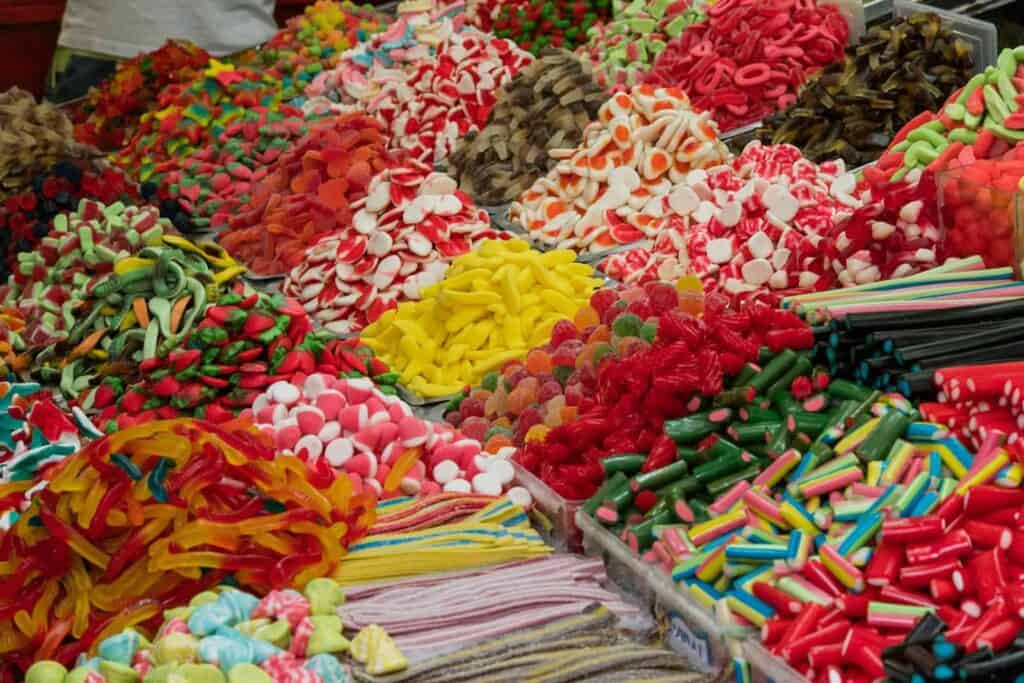The Ultimate Guide to Texture Analysis in Candy Production Lines
What is Texture Analysis in Candy Manufacturing?
Texture analysis is the science of measuring the mechanical properties of candy—hardness, chewiness, stickiness, and brittleness—using objective, repeatable methods.
Instead of saying “the gummy is chewy” or “the lollipop is hard,” texture analysis provides numerical data. These values can be compared across batches, recipes, or storage conditions. For candy manufacturers, this data is essential for:
Quality Control (QC): Ensuring every batch of candy has consistent texture.
Product Development: Testing new formulations for desired chewiness or crispness.
Shelf Life Studies: Monitoring texture changes during storage.
Consumer Experience: Matching instrumental results with sensory perception.
From Sensory Perception to Measurable Data
When consumers enjoy candy, they notice hardness, crunch, chew, and stickiness. Texture analysis instruments transform these sensations into measurable parameters by applying force to a candy sample and recording its response.

For example:
A hard candy shows high peak force.
A gummy bear shows springiness and cohesiveness.
A chocolate bar breaks with clear fracturability on a bending test.
Anatomy of a Candy Texture Analyzer
1. Load Cell – Measuring Force
The load cell converts the resistance of a candy sample into electrical signals.
Low-capacity load cells (5–10 kg) → Gummies, jellies, marshmallows.
High-capacity load cells (50–100 kg) → Hard candy, chocolate, brittle bars.
2. Drive System – Controlled Motion
The crosshead motor moves probes at precise speeds. For viscoelastic products (like caramels or gummies), test speed is critical—fast tests make samples seem harder.
3. Probes and Fixtures – Simulating Real Eating
Probes are chosen based on candy type:
Cylinder probes → Hardness of gummies and fudge.
Cone/needle probes → Puncture jelly or gel centers.
Blade sets → Shear tests on nougat, energy bars.
3-point bend rigs → Chocolate bars, biscuits, brittle candy.
Fundamental Principles of Candy Texture Testing
Force
Hardness (Peak Force): Maximum resistance—important for hard candy and chocolate.
Adhesive Force: Negative force during probe withdrawal—key for sticky caramel or toffee.
Distance
Measures deformation depth, important for chewiness in gummies.
Time
Dynamic properties matter. In stress-relaxation tests, gummies show force decay over time, revealing viscoelastic behavior.

Force-Distance Curve in Candy Analysis
Every test produces a curve:
Y-axis = Force (resistance).
X-axis = Distance or Time.
Example:
Hard candy curve: Sharp rise, high peak, brittle fracture.
Gummy curve: Gradual slope, recovery phase shows elasticity.
Common Texture Tests in Candy Production
Single Compression Test
Principle: Probe compresses sample once.
Candy Application: Hardness of fudge, fruit chews, or jelly blocks.
Texture Profile Analysis (TPA)
Principle: Two compressions simulate chewing.
Measures: Hardness, Cohesiveness, Springiness, Chewiness.
Candy Application: Gummies, marshmallows, taffy.
Penetration / Puncture Test
Principle: Needle penetrates sample.
Candy Application: Gel strength in jelly candies, fillings, soft centers.
Shear Test
Principle: Blade cuts sample.
Candy Application: Nougat, cereal bars, chewy caramel slices.
Three-Point Bend Test
Principle: Sample supported at two ends, force applied in center.
Candy Application: Chocolate bars, brittle, wafer sticks.
Correlating Candy Texture with Sensory Experience
| Sensory Attribute | Instrumental Parameter | Candy Example |
|---|---|---|
| Hardness | Peak Force | Lollipop, hard candy |
| Chewiness | Hardness × Cohesiveness × Springiness | Gummy bear, taffy |
| Stickiness | Adhesive Force | Toffee, caramel |
| Fracturability | First major force drop | Chocolate bar, brittle |
| Springiness | Distance recovery | Marshmallow, jelly candy |
Designing Reliable Candy Texture Experiments
Define Objective
Example: “Compare chewiness of sugar-based vs. sugar-free gummies.”
Standardize Sample Prep
Temperature control: Chocolate hardness changes with ±2°C.
Size/shape uniformity: Use molds for consistent gummy pieces.
Orientation: Always test chocolate bars across the same axis.
Select Right Probe & Method
Gummies → Cylinder probe, TPA.
Hard candy → 3-point bend, high-force probe.
Optimize Parameters
Trigger Force: Low enough to detect contact.
Test Speed: 1 mm/s baseline.
Strain: 25–50% compression for gummies; avoid bottoming-out.
Texture Analysis in Candy Shelf Life Testing
Texture analysis is crucial for predicting candy stability over time:
Gummies → Hardness increases (staling).
Chocolate → Fat bloom affects snap and appearance.
Hard candy → Moisture uptake leads to stickiness.
Using real-time and accelerated shelf life studies, manufacturers can determine best packaging (e.g., metallized films, moisture barriers) to maintain texture quality.
Conclusion: Why Texture Analysis is the Sweet Science of Candy Production
Texture defines the consumer experience of candy—from the snap of chocolate to the chew of gummies. By integrating texture analysis into candy production lines, manufacturers can:
Guarantee consistent quality across batches.
Develop innovative formulations (sugar-free, functional candy).
Extend shelf life with better packaging strategies.
Strengthen brand trust through reliable product performance.
Texture analysis isn’t just testing—it’s the science of sweetness consistency.
- ASTM International – Texture & Rheology Testing Standards https://www.astm.org/
- ISO – International Organization for Standardization https://www.iso.org/
- Institute of Food Technologists (IFT) https://www.ift.org/
- AOAC International – Association of Official Analytical Chemists https://www.aoac.org/
- FDA – U.S. Food and Drug Administration https://www.fda.gov/
- USDA – United States Department of Agriculture https://www.usda.gov/
- American Society for Testing and Materials (ASTM) https://www.astm.org/
- Society of Rheology https://www.rheology.org/
- Materials Research Society (MRS) https://www.mrs.org/
- NIST – National Institute of Standards and Technology https://www.nist.gov/





